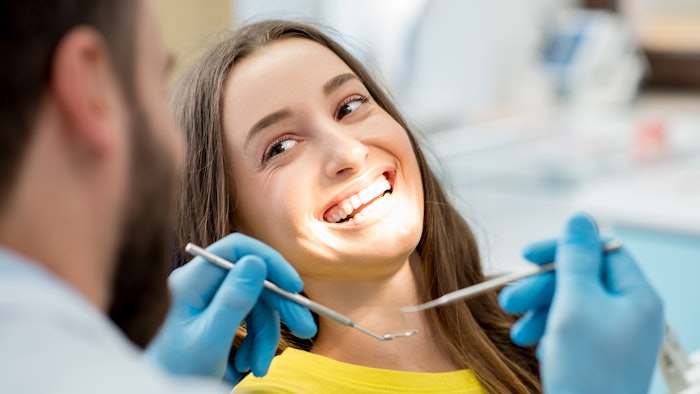
Researchers from U.S. based firms Draper and Colgate recently produced an artificial mouth made with lab-grown mouth tissue to serve as a testbed for oral care products and medical therapies.
According to Else Vedula, Ph.D., Draper, the research will allow for the evaluation of therapeutic agents and disease progression. The gum tissue grown in the laboratory can remain viable for 28 days, which is three weeks longer than existing models.
Related: 5 Keys to the Future of Oral Care
Per the research, the microtissues are grown using actual human tissue. A special high-throughput device, called PREDICT96 by Draper, keeps the microtissues “alive” for weeks, infusing them with nutrients and tracking their reactions in real-time.
According to the paper, researchers established a “multi-week experimental window in which transepithelial electrical resistance (TEER) was stable, indicating mature, homeostatic barrier function over an extended length of time in vitro.” They also demonstrated an inflammatory disease state of MOUTH (Microfluidic model of Oral physiology for Understanding Tissue Health), in which cytokine secretion increased and barrier function decreased in response to an initial inflammatory stimulus.
Ashley Gard of Draper’s Tissue Engineering group and co-author of the paper, commented: “The near-real time readout of TEER (barrier function) is important since the main function of gum tissue is to serve as the primary protective barrier in the mouth. Our research opens the door for all sorts of preclinical investigations and R&D efforts, including infections impacting the lungs and mouth, such as influenza and COVID-19.”




![Burst founder Hamish Khayat says, 'The kids’ brush is a great example [of our product development philosophy]: the biggest problem with existing brushes was that brush heads aren’t curved at the end, so they can’t reach the rear molars. So, you curve the head and you solve that problem.' Pictured are variants of the BurstKids Sonic Toothbrush.](https://img.gcimagazine.com/files/base/allured/all/image/2022/05/BURSTkids_Sonic_Toothbrushes.6287fd790c577.png?auto=format%2Ccompress&fit=crop&h=191&q=70&w=340)





